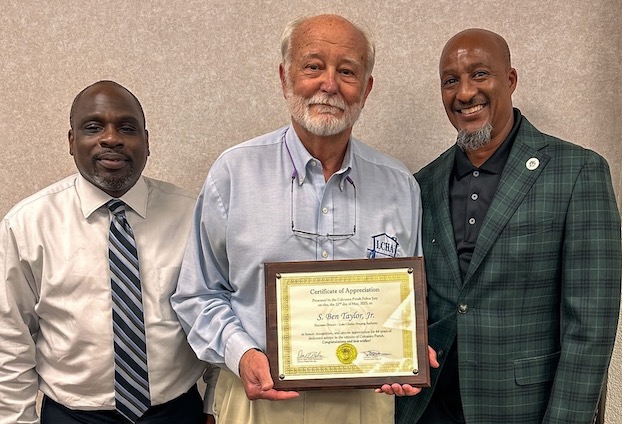Informer: DOTD says I-10 bridge study to end in spring 2016
Published 11:30 am Monday, August 12, 2013
Is there any new news on plans to replace the I-10 bridge? Where can someone go to view updates and/or potential designs?
The situation with the Interstate 10 Calcasieu River bridge remains as it was a little over a year ago: Officials are awaiting the results of a multi-year environmental-impact study prompted by chemical contamination.
The study, slated to end in spring 2016, is now in the “environmental process,” said Deidra Druilhet, spokeswoman for the state Department of Transportation and Development. A Federal Highway Administration notice about the study was published in the Federal Register on Aug. 1.
According to a website set up by state and federal highway officials, the next step in the process is data collection. Once that’s complete, officials will prepare a draft environmental impact statement, which they will present to the public for review.
The Federal Register notice says the eventual construction project will involve nine miles of road and that officials will look at four bridge alternatives that were devised in earlier studies, along with a “no-build alternative.”
Druilhet said officials initially planned to six-lane the highway through Lake Charles, replace the bridge and its approaches, and rework frontage roads and interchanges, including the one at Sampson Street in Westlake.
The project was halted — and the latest study ordered — after officials discovered that ethylene dichloride from a 1994 pipeline leak had migrated northward to the area around the bridge.
“Extreme care must be taken through the planning and design of a new bridge to eliminate the risk that bridge reconstruction work may facilitate EDC infiltration into the Chicot Aquifer, the principal source of drinking water in southwest Louisiana. …,” Steve Jiles, DOTD’s regional administrator, wrote in a commentary piece published in the American Press last September.
“The presence of EDC in the path of the new bridge will require design changes to avoid the contamination, causing an increase in the cost of a new bridge.”
The steps in the study process, as listed on the project website, parts of which remain under construction:
Publish Notice of Intent (NOI) – An explanation of the project published in the Federal Register that initiates the EIS process.
Begin data collection
Begin Draft Environmental Impact Statement (DEIS) – Study possible effects on the local environment.
Public scoping meeting – Gather public input on the Project coordination plan, draft purpose and need of the project and study area.
Agency scoping meeting – Present materials for Federal Highway Administration review.
Address public scoping meeting comments and continue environmental data collection, and draft environmental preparation.
Second public meeting – Gather public input on the final project coordination plan, purpose and need statement and preliminary alternatives.
Third public meeting – Gather public input on the reasonable design alternatives.
Publication of DEIS for review.
Public hearing – Present the results of the DEIS to public.
Final environmental document/schematic approval – Final EIS and schematic documents are published along with responses to public hearing comments.
Receive Record of Decision (ROD) – Final step in the EIS process that identifies the approved/selected alternative.
A final bit of news: Travel and Leisure magazine last week ranked the I-10 span as the nation’s seventh most dangerous bridge, based on its analysis of Federal Highway Administration data.
Online: www.i10lakecharles.com; www.travelandleisure.com.
The Informer answers questions from readers each Sunday, Monday and Wednesday. It is researched and written by Andrew Perzo, an American Press staff writer. To ask a question, call 494-4098, press 5 and leave voice mail, or email informer@americanpress.com
(American Press Archives)





